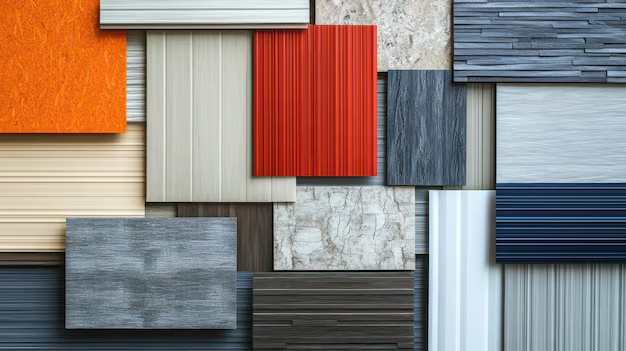The Influence of Location on Siding Colors
When selecting siding colors, one cannot ignore the influence of location. Different regions showcase distinct preferences shaped by climate, natural surroundings, and cultural aesthetics. For instance, coastal areas often favor light and airy colors like pale blues, soft greens, and sandy beiges, which resonate with the beachy vibe and create a calming atmosphere. Conversely, homes situated in mountainous regions tend to opt for deeper, richer tones such as forest greens, browns, and warm reds, allowing them to harmonize with the natural landscape. Urban settings may embrace bold and modern colors, reflecting the vibrant city life, while suburban neighborhoods might gravitate towards more traditional shades, establishing a sense of community and continuity. Understanding these regional influences can help guide your choice of siding colors, ensuring your home fits seamlessly into its environment.
Popular Siding Colors and Their Psychological Impact
Siding colors do more than beautify a home; they also evoke emotions and convey messages. For example, blue is often associated with calmness and serenity, making it a popular choice for coastal homes. Similarly, green symbolizes nature and tranquility, making it ideal for homes nestled in wooded areas. On the other hand, vibrant colors like red and yellow exude energy and warmth, perfect for homes aiming to make a bold statement. When selecting siding colors, consider the psychological impact of your choices, as they can influence how your home is perceived by others. By understanding the emotions tied to certain colors, you can choose hues that not only reflect your personality but also enhance the overall ambiance of your home.
The Timeless Appeal of Neutral Siding Colors
Neutral siding colors continue to dominate the market for several reasons, offering versatility, elegance, and timeless appeal. Shades such as white, beige, gray, and taupe serve as a blank canvas, allowing homeowners to experiment with various accent colors and landscaping choices without overwhelming the overall aesthetic. Additionally, neutral tones often complement a wide range of architectural styles, from traditional to contemporary, making them a safe yet stylish option for any home. Moreover, neutral siding colors tend to have a longer lifespan in terms of trends, as they remain appealing across generations. By opting for neutral hues, homeowners can ensure their home maintains its charm and appeal, regardless of changing design trends over time.
Bold and Vibrant Siding Colors: Making a Statement
If you want to make a bold statement, consider vibrant siding colors that capture attention and showcase your personality. Colors like deep red, bright yellow, and vibrant teal can infuse energy and excitement into your home’s exterior. However, while choosing bold colors can be a daring choice, it’s crucial to consider the surrounding environment and architectural style. For example, a bright yellow house may look stunning in a sunny beach town but might clash in a more subdued, wooded area. Therefore, when opting for vibrant siding colors, aim for harmony between your home and its surroundings. Combining bold colors with neutral accents can create a balanced and visually appealing aesthetic, ensuring your home stands out without feeling out of place.
The Role of Architectural Style in Choosing Siding Colors
Architectural style plays a significant role in determining suitable siding colors for your home. Traditional styles, such as colonial or Victorian, often look best with classic hues, including muted pastels, soft whites, and rich earth tones. In contrast, contemporary homes often embrace bolder colors and sleek finishes, favoring shades like charcoal gray, navy blue, and even black. When selecting siding colors, consider the architectural elements of your home, such as rooflines, trim, and landscaping. The right color palette can accentuate these features, enhancing your home’s visual appeal. For example, pairing a modern flat-roofed design with a striking dark blue siding can create a captivating contrast, showcasing both the architecture and the color choice effectively.
Seasonal Considerations in Siding Colors
Seasons can significantly affect how siding colors are perceived. A color that looks stunning in summer may appear dull and uninspiring during winter months. Therefore, it’s wise to consider seasonal changes when choosing siding colors for your home. For instance, earthy tones like warm browns and muted greens often complement the lush surroundings of summer while providing a cozy ambiance during the colder months. Similarly, brighter colors can add vibrancy to your home during the spring and summer but may feel too harsh in fall or winter. To achieve a timeless look, consider colors that resonate well across seasons, allowing your home to maintain its appeal throughout the year.
Exploring Eco-Friendly Siding Colors and Materials
As sustainability becomes increasingly important, many homeowners are seeking eco-friendly siding options that reflect their values. Eco-friendly siding materials, such as fiber cement, reclaimed wood, or vinyl siding made from recycled materials, can be combined with colors that evoke a sense of nature and environmental consciousness. Earthy shades, soft greens, and natural wood tones are excellent choices that reflect an eco-friendly lifestyle. Additionally, using sustainable materials and colors not only reduces environmental impact but also creates a unique, attractive exterior that sets your home apart. By selecting eco-friendly siding colors and materials, you can enhance your home’s beauty while supporting a sustainable future.

The Importance of Testing Siding Colors Before Committing
Before committing to a particular siding color, testing it in your home’s environment is crucial. Lighting conditions, surrounding landscape, and even the architecture can drastically affect how a color appears. Consider purchasing small sample boards or swatches to apply to a section of your home. Observe how the color changes throughout the day with varying light conditions, as natural and artificial lighting can alter perception. Testing siding colors allows you to make an informed decision, ensuring that you choose a hue that aligns with your vision and complements your home. Additionally, seeking input from friends or family can provide valuable perspectives, helping you feel more confident in your choice.
The Impact of Trends on Siding Colors
Trends in siding colors can change rapidly, influenced by cultural shifts, design innovations, and popular media. For instance, in recent years, the rise of minimalist design has led to a surge in demand for neutral colors, while the popularity of bold statements has kept vibrant colors in vogue. Keeping an eye on current trends can help you choose siding colors that feel contemporary and stylish. However, it’s essential to strike a balance between trendy hues and timeless options to ensure your home remains appealing over the long term. Instead of following trends blindly, consider incorporating trending colors as accents or in conjunction with timeless shades, allowing your home to feel fresh without losing its identity.
The Importance of Color Coordination with Trim and Accents
When selecting siding colors, it’s crucial to consider how they will coordinate with trim and accent colors. These elements play a vital role in enhancing your home’s overall aesthetic, creating visual interest and cohesion. For example, a bold siding color may need a contrasting trim color to frame windows and doors effectively, while a neutral siding color might benefit from a striking accent color to draw attention to architectural features. Pay attention to how the colors interact with each other, as well as how they complement the surrounding landscape. Coordinating siding, trim, and accent colors ensures a polished and harmonious look, allowing your home to stand out beautifully in its environment.
The Influence of Cultural Aesthetics on Siding Colors
Cultural aesthetics can significantly influence siding color choices, reflecting regional traditions and preferences. In some cultures, specific colors may symbolize good fortune or prosperity, affecting homeowners’ decisions. For instance, many Asian cultures embrace red as a color of luck and happiness, leading to its popularity in home exteriors. Similarly, Mediterranean styles often showcase warm, earthy colors like terracotta and soft yellows to reflect the natural landscape and climate. Understanding the cultural significance of various colors can guide homeowners in selecting siding colors that resonate with their personal beliefs while honoring local traditions. By embracing cultural aesthetics, you can create a home that tells a unique story and reflects your identity.
Maintenance Considerations for Siding Colors
When choosing siding colors, maintenance is a critical factor to consider. Some colors may require more upkeep than others, as they can show dirt, dust, and wear more readily. Lighter colors, while beautiful, may need frequent cleaning to maintain their fresh appearance. Conversely, darker colors might fade over time, requiring touch-ups or repainting. Understanding the maintenance requirements of different siding colors can help you make a more practical decision. If you prefer a low-maintenance option, consider choosing darker or medium tones that can mask dirt and imperfections while still offering visual appeal. By factoring in maintenance, you can ensure your home remains beautiful with minimal effort.
The Benefits of Working with Professionals on Siding Colors
While selecting siding colors can be an exciting process, it can also be overwhelming, especially with so many options available. Working with professionals, such as architects, designers, or color consultants, can simplify the decision-making process. These experts can provide valuable insights into color psychology, regional trends, and maintenance considerations, guiding you toward the best choices for your home. Additionally, professionals can help you visualize your options, creating digital mockups or renderings to illustrate how different colors will appear in context. Collaborating with professionals not only enhances the overall aesthetic of your home but also ensures that your choices align with your vision and lifestyle.

The Final Touch: Enhancing Curb Appeal with Landscaping
Once you have selected the perfect siding colors for your home, don’t forget to consider how landscaping can enhance curb appeal. Plants, flowers, and outdoor decor can significantly influence the overall aesthetic, complementing or contrasting with your siding colors. For example, vibrant flowers can add pops of color against neutral siding, while lush greenery can create a harmonious connection with earthy tones. Additionally, outdoor furniture, lighting, and decorative elements can tie the look together, enhancing your home’s charm. By paying attention to landscaping in conjunction with siding colors, you can create a welcoming and visually stunning environment that showcases your home beautifully.
Conclusion
Selecting the right siding colors for your home is a multifaceted process that involves careful consideration of various factors. From regional influences and architectural styles to trends and cultural aesthetics, the choices you make will ultimately define your home’s character. By understanding the psychological impact of colors, testing your options, and considering maintenance requirements, you can make informed decisions that reflect your style and enhance your home’s appeal. Remember that siding colors can evoke emotions, tell a story, and create a lasting impression. So take your time, explore the options, and choose the colors that resonate with you, ensuring your home stands out beautifully in its surroundings.





